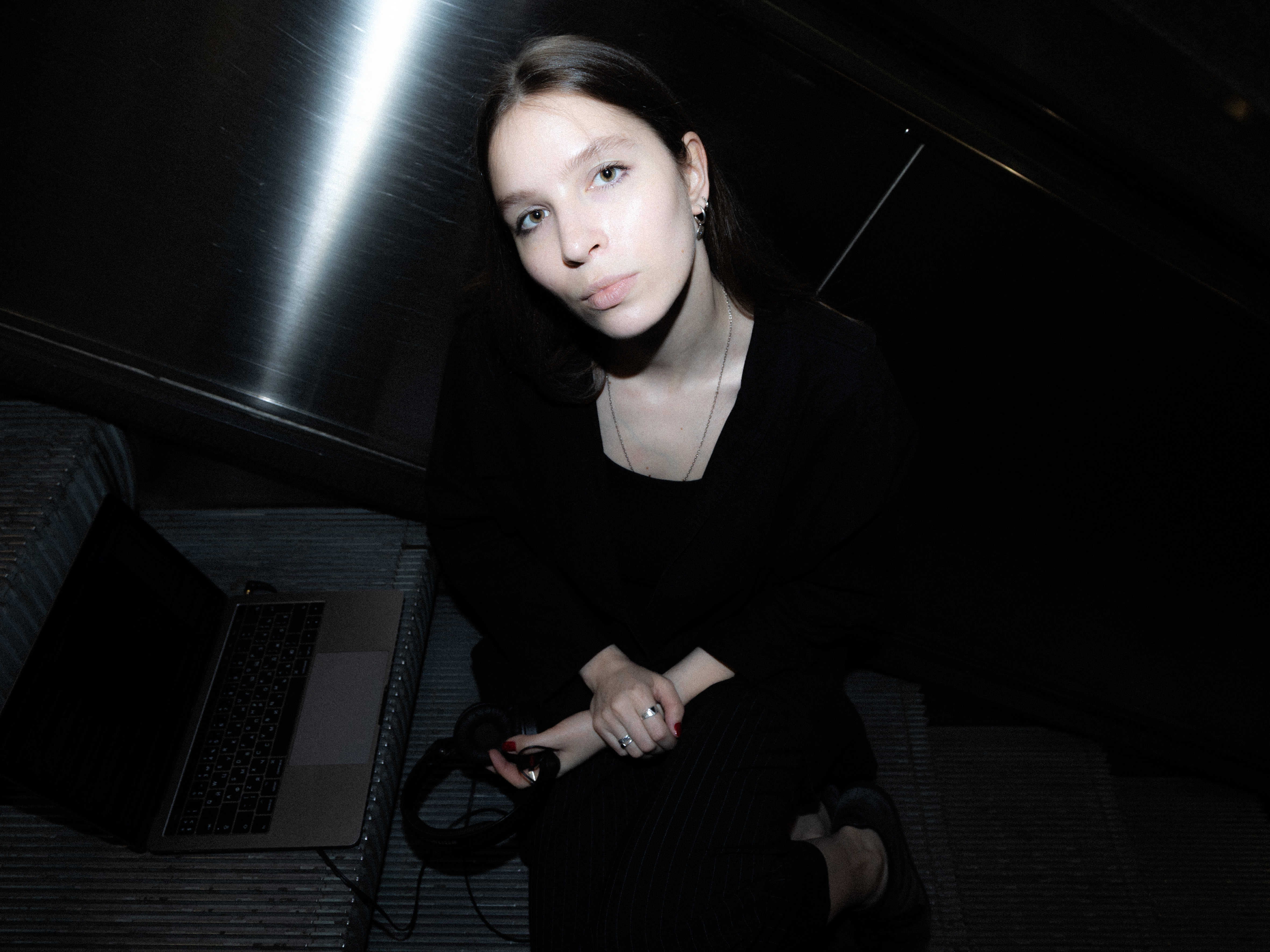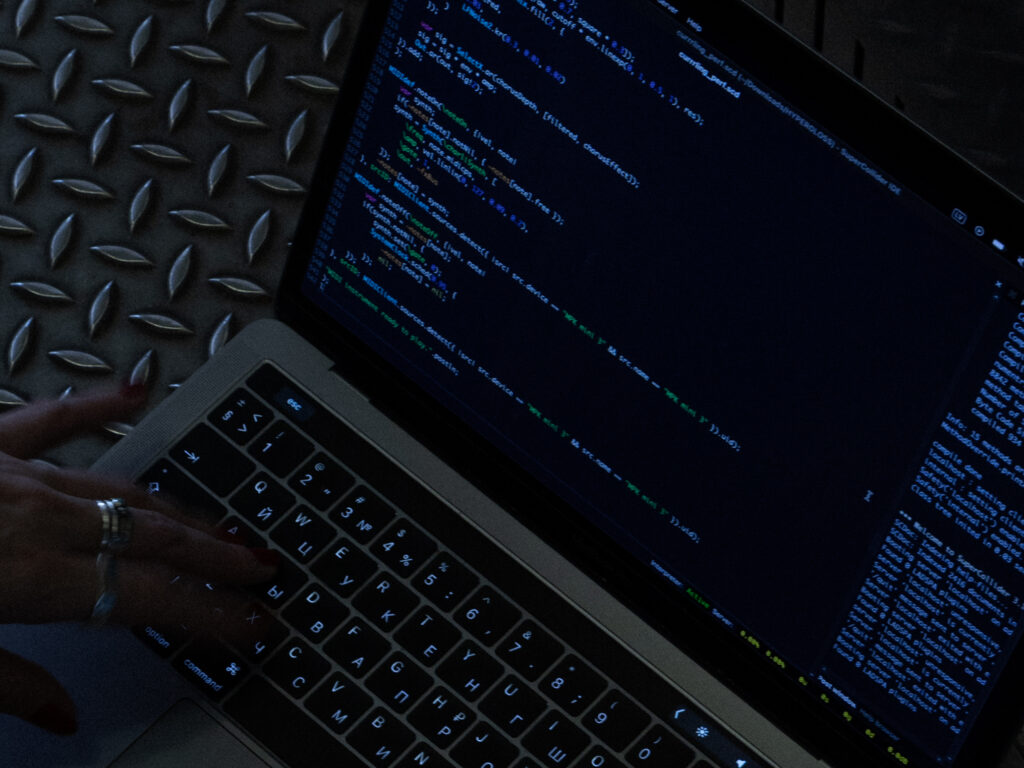
sofi is a multidisciplinary sound artist and performer who actively uses modern music technologies such as creative audio coding, ambisonics, live improvisation with modular synthesizers and code, and DIY electronics. With a classical background in piano performance and electroacoustic composition, she is currently engaged in artistic research while pursuing a Master’s degree in Music Technology at the Sibelius Academy of Music in Helsinki, Finland. sofi focuses on creating performances inspired by deep listening, while also exploring the narrative of triggers, noise, and randomness throughout intensive listening sessions.
Her latest release, Hypergloss, is out now via Superpang.
You have a new album out on Superpang titled “Hypergloss”. Can you talk about it?
Hypergloss is something I worked on after returning from a quite chaotic, very fast-paced series of travels and performances. I noticed myself imagining new sounds and algorithms even while performing other works. I remember sitting in the studio, and “currrling” basically composed itself in a couple of hours—there was this transparent mediation between me and the code. I felt much bolder with this project: I used recordings of my own voice for the first time, employed buffer scratching techniques, and coded all the signal processing chains and synthesisers from scratch. During that winter of 2024/25, I was so deep in this process that I caught myself thinking in SuperCollider syntax during everyday tasks—like while making coffee, my mental mapping would be Coffee.ar(pour, cup, 1). I was in a really hyper, fluttery and emotional state, and the sound somehow reflected that energy.
With Hypergloss I also wanted to remain very genre-fluid within experimental sound—using some pop-inspired elements, some rhythmical accents, and inviting my friend Lumi Mannermaa to collaborate on a track, “main memos”, contributing cello elements.
The release has a motif: “poetry of frustration”. What is meant by it? Is the frustration related to the creative process or the world at large?
This theme was more related to small, daily micro-tensions that accumulate over time. The creative process in this case is a form of resolution, release and liberation for me. I was mostly trying to capture an emotion I was experiencing at that moment in time, when familiar patterns suddenly became unstable. In this context, frustration arises from the feeling of powerlessness to change a situation or outcome, no matter how much effort you put in.
Could you discuss your musical and artistic background?
Music has been in my life for as long as I can remember. My mom worked in radio, and I spent a lot of time in the studios of Latvian Radio, listening to all kinds of music. I began studying piano performance at the age of three, Music was always a passion for me. I performed in concerts, took part in competitions, and developed a sense of responsibility and discipline from a young age. But while pursuing my bachelor’s degree at the Latvian Academy of Music, I realised that simply interpreting existing works wasn’t fulfilling. So I started experimenting—at one point performing as a DJ, collecting vinyl and working at a record store in Riga. I have to say, performing as a DJ in a more underground setting really helped me build the confidence to pursue electroacoustic composition in a deeper and more focused way through academic studies. Once I encountered music coding for the first time, I was hooked, and music technology became the central focus of my attention.
You studied piano performance and electroacoustic performance, and are currently engaged in artistic research, pursuing a Master’s degree in Music Technology. In a way, these two practices—practical and theoretical—come together in your work. How do you perceive them? What research interests you in particular?
I really value the privilege of being part of an academic community and contributing to it with my own research. It helps me reflect on my own work, draw inspiration from other artists, learn about current technology, and experiment with more historical, analogue techniques and instruments. I’m always interested in researching performative practice within computer music, both aesthetically and practically. Over the past two years, I’ve been trying to document my experiments within ambisonics in combination with code. I believe there’s always room to contribute to documentation and share experiences, helping to create more access points for other artists to explore this wonderful world of open-source software.
How important is listening for you, both as a creator and consumer of sound? How does it tie in with perception more broadly?
I’m constantly navigating between different listening modes. I can shift focus from the material quality of sound to the recognition of its source, spatial localisation, technological aspects, or the imaginary worlds it evokes. As a creator, listening helps me define my intentions. But I also deeply enjoy just being a consumer sometimes—allowing personal subjectivity to take over and surrendering to the music I love. In terms of perception, I think it’s something that happens on thresholds— between senses—when we allow our stable recognition patterns to be broken. Perception, to me, is about wonder, not about dictating specific outcomes.
Sound in your work is something to be tweaked, stretched, twisted—can you talk about your approach to sound creation?
I approach sound as something that is never fixed—it’s a material that can be continuously reshaped. I think a lot about the potential of improvisation and live performance, so customisable algorithms and strands of code are essential to my practice. Sometimes, I aim to distance my sounds from their expected contexts in order to create spaces for fictional projection and speculative listening. I’m drawn to sonic fiction, uncertainty, and constant communication with my computer—as if it’s a co-performer, reacting to its mechanics within the codes I create. My approach to composition is very intuitive, and I trust in the emergent properties of sound itself to guide the process.

You are originally from Latvia. How is the scene there? Are you engaged in it?
The scene is quite tight-knit but somewhat fragmented. Festivals and venues like Skaņu Mežs, Sound Days in Liepāja, Sound Manor 360, Tīrkultūra radio, and many others provide really important spaces for experimental work, and there’s something distinctly Baltic about the aesthetic sensibilities.
I try to perform as much as possible when I’m back in Riga. The funding constraints we always experience foster innovation and decentralisation—smaller communities are starting to engage with experimental practices beyond the capital, which is boosting activity in various parts of Latvia.
What are your dreams and wishes?
I want to hold on to that feeling I had while making Hypergloss—when the algorithms and sonic materials were teaching me things I didn’t know I was looking for. I also hope to someday organise my own events within the community in Latvia, and continue both my research and my contributions to the open-source and creative coding communities.
Interview Lucia Udvardyova
Photo Aino Ahola